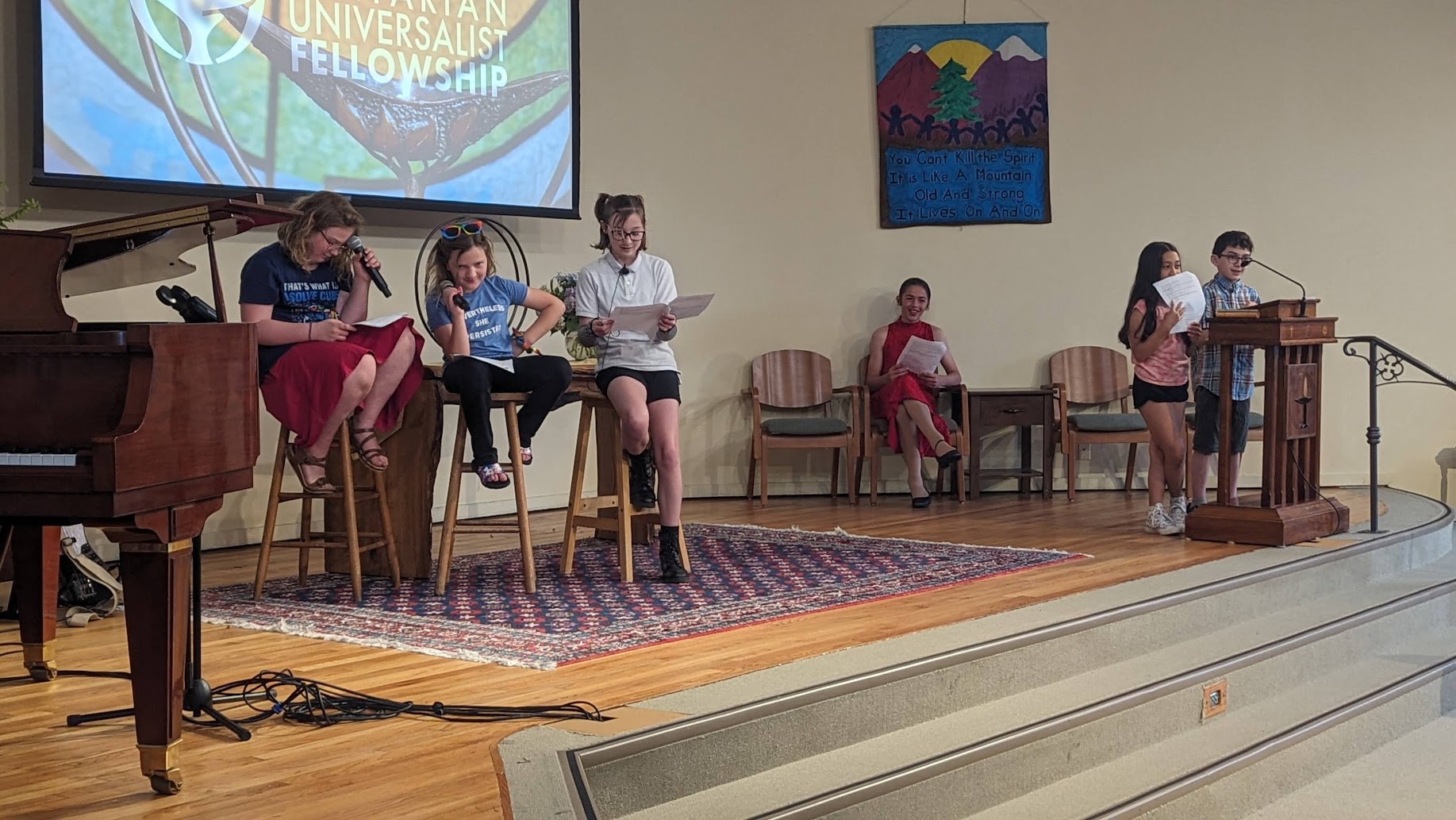We encourage children to remain in the entire service. There is a benefit to their presence
In the meantime, as we move to one service, I acknowledge that it is difficult for some children to sit still in service and focus (and if we are honest, it can be difficult for many adults as well). While children are engaged best when they are directly present in the service (sitting closer to the front also keeps them more engaged), we want to give them some activities to keep their fidgety hands occupied. So we are making “Quiet Activity Bags”. These will have items for children to draw with, quiet games, and devices to allow them to fidget without too much distraction to those around them. The Library is also equipped with activities for children and a live stream of the service.
Here are two other religious professionals sharing their thoughts on children and youth in service.
Unitarian Universalist Religious Educator Kim Sweeny wrote a great article exploring the history and future of religious education called The Death of Sunday School. Here is an excerpt:
For most UU congregations, moving to whole congregation worship would be a substantial shift. In many of our congregations, there might be some reluctance or anxiety in even considering it. Unitarian Universalism is one of the few denominations in the United States that assumes that children cannot and should not be in weekly worship with adults for an hour. The Unitarian Universalist Association’s 2005 Commission on Appraisal report found that “the way UUs raise our children seems to prepare them for something completely different than what Unitarian Universalism actually offers. This suggests that UUs should change one or the other (or both).” Without experiencing worship with the whole congregation, UU children and youth cannot learn how to be in a sanctuary, let alone benefit from the spiritual practice of congregational worship. They cannot see adults modeling moments of silence or stewardship, caring deeply for one another with expressions of joy and sorrow, singing the songs of our faith, or sharing in the ministry of worship.
If the above alone is not enough, here are twelve more reasons to welcome children in church (Slightly adapted from 12 Reasons to Welcome Kids in Church + Tips for Actually Doing It):
- Children are people too: When we welcome kids in church, we acknowledge that they are important humans and community members in the present, not just in the future.
- A kid-friendly church is a parent-friendly church: When we welcome children, we are making their caregivers feel welcome too.
- Children learn by participating: When we welcome kids, we invite them to experience the sacred in community with adults.
- Kids can handle sermons: When we involve children in church, we expose them to deep, important ideas.
- It’s good for everyone: When we include kids in church, we all get to practice being more generous with each other.
- It makes services better: When we plan for children to be involved, we plan better, richer services.
- Kids have lots to offer: When we welcome children, they are able to contribute their time and skills.
- It makes us stronger: When we welcome kids in church, we strengthen relationships across generations.
- It can improve preaching: When we include children in church, our preachers are prompted to do a better job for everyone and make sermons more accessible to all.
- Adults don’t miss out: When kids are part of the church service, adults don’t have to choose between worshipping and leading or attending kids’ programs.
- It helps young people bridge the gap: When we include people in services from a young age, they have a less jolting transition in adolescence.
- It models welcome: When we welcome kids in church, we demonstrate how welcome everyone is.
Rabbi Aaron Alexander reflects on the benefits of Children in the worship service for the entire congregation.





